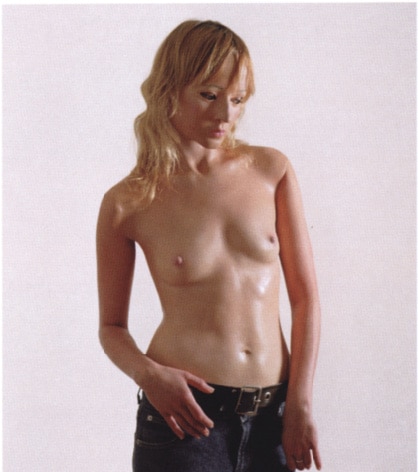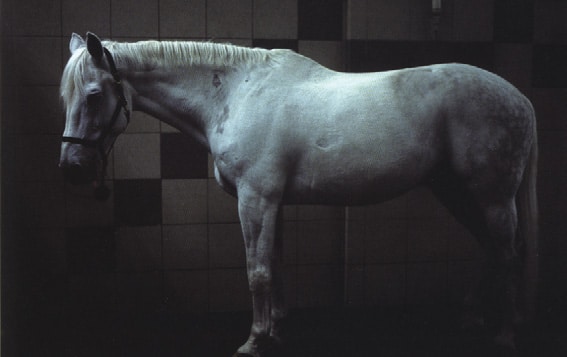Photo-London
Although London – with its large number of photo galleries; regular photography auctions at well-known auction houses such as Christie’s, Sotheby’s and Bloomsbury; excellent photo collections in the Victoria and Albert Museum, the National Portrait Gallery and Tate Gallery; several publishers specialising in photography; and numerous photo agencies – is a leading centre of world photography, until recently it did not have a large photography fair that could compete with events in New York, Paris, San Francisco or Los Angeles. That all changed in May. Daniel Newburg, publisher of PLUK magazine (Photography in London, the UK and Europe), managed to attract 45 exhibiting galleries and private photo dealers to the first Photo-London festival, which took place in the elegant setting of the Royal Academy of Arts. At the same time, he organised the London Photo Week, which featured openings of numerous exhibits, plus lectures and studio visits.
Even though the number of visitors to Photo-London cannot measure up to much larger events such as Paris Photo and AIPAD in New York, it is clear that its very first year was a success, proving that the British capital has all the prerequisites for hosting another photography event of international importance. Although this time around most exhibitors came from Great Britain, participants in the London fair included important galleries from Germany (Cologne’s Priska Pasquer, Berlin’s J. J. Heckenhauer, Frankfurt’s Galerie Poller and Munich’s Daniel Blau), France (Serge Plantureux, Paris), Austria (Johannes Faber, Vienna), Denmark (Northern Light Gallery, Bronshoj) and Canada (Stephen Bulger Gallery, Toronto). Prague’s Czech Centre of Photography also had a booth at the fair, with owner Jiří Jaskmanický offering works by classic Czech photographers such as Drtikol, Sudek, Lauschmann, Bartuška and Honty, as well as works by contemporary artists including Jan Saudek, Jiří Křenek, Tono Stano and Václav Jirásek. Attendance from the United States was a little disappointing, with that country represented only by New York galleries Bonni Benrubi, Hamburg Kennedy and Paul Kasmin. It is true, however, that the dates of the London fair coincided with those of Art Chicago, at which many prominent American photo galleries took part.
The range of presented photographs, priced from several hundred to half a million euros, was quite wide and certainly was not dominated by the work of dead legends, as is the case at New York’s AIPAD, nor by the large-format colour enlargements by young photographers and artists using photography that tend to dominate Paris Photo. Although most booths offered works by multiple artists, London’s Alison Jacques Gallery dedicated its entire display to self-portraits and photographs of flowers by Robert Mapplethorpe, and another British gallery, White Cube/Jay Jopling, presented slides of a lovemaking couple by Sam Taylor-Wood in a darkened room; the work, however, did not measure up to the inventiveness of other series by this famous artist. Robert Hershkowitz, one of the most renowned British dealers in 19th-century photographs, exhibited an exquisite collection of period originals by Talbot, Cameron, Emerson, Baldus, Marvill and other masters. Their quality and preciousness was often reflected in their price: portraits by Hill and Adamson were available for 12,000 pounds, a picture of ancient sites in Thebes by Francis Frith went for 20,000 pounds, Talbot’s calotype Bridge in Cambridge was 25,000 pounds, and the romanticist photograph Trees by the Road was 50,000 pounds. The Priska Pasquer gallery from Cologne presented an excellent collection of rare works from the 20th century by August Sander, František Drtikol, Heinz Hajek-Halke, Albert Renger-Patzsch, Alexander Rodchenko and Lisetta Model. Much room was given to contemporary photography, which was represented by prominent visual arts galleries that do not usually attend photography fairs. The highest prices, in the tens of thousands of pounds, were asked at the booths of London art galleries Ben Brown Fine Arts and Sprüth Magers Lee for works by popular representatives of the ‘Düsseldorf School’ – the Bechers, Candida Höfer, Thomas Struth, Andreas Gurski and Thomas Ruff. Top priced photographs included works by Philip-Lorca di Corcia, which straddle the border between documentary and staged photography, and intermedial works by Sigmer Polke offered by the London branch of the Gagosian Gallery. The other end of the price spectrum was occupied by photographs from the Czech Centre of Photography (some colour photos from the Jiří Křenek’s Mobiles series were available for 400 pounds) and by traditional documentary photographs offered by London collector and dealer (and brother-in-law of Henri Cartier- Bresson) Eric Franck, who represents Jindřich Štreit, Markéta Luskačová and Hana Jakrlová. Visitors who could not afford even those photographs could at least buy books offered by several second-hand bookshops or the König bookshop from Cologne.
Taking place parallel to the fair was London Photo Week, which included openings of numerous exhibits, lectures, studio visits and special tours of large exhibits that were currently running in London – such as the retrospective of Bill Brandt at the Victoria and Albert Museum held at the occasion of the 100th anniversary of his birth, comparative exhibitions of Mexican photographs by Edward Weston and Tina Modotti at the Barbican Gallery, and an exhibition of celebrity portraits by Cecil Beaton at the National Portrait Gallery. Both the fair and London Photo Week were met with enthusiastic welcome and great interest and will take place again in May 2005.
#4 Intimacy
Archive
- #45 hypertension
- #44 empathy
- #43 collecting
- #42 food
- #41 postdigital photography
- #40 earthlings
- #39 delight, pain
- #38 death, when you think about it
- #37 uneven ground
- #36 new utopias
- #35 living with humans
- #34 archaeology of euphoria
- #33 investigation
- #32 Non-work
- #31 Body
- #30 Eye In The Sky
- #29 Contemplation
- #28 Cultura / Natura
- #27 Cars
- #26 Documentary Strategies
- #25 Popular Music
- #24 Seeing Is Believing
- #23 Artificial Worlds
- #22 Image and Text
- #21 On Photography
- #20 Public Art
- #19 Film
- #18 80'
- #17 Amateur Photography
- #16 Photography and Painting
- #15 Prague
- #14 Commerce
- #13 Family
- #12 Reconstruction
- #11 Performance
- #10 Eroticon
- #9 Architecture
- #8 Landscape
- #7 New Staged Photography
- #6 The Recycle Image
- #5 Borders Of Documentary
- #4 Intimacy
- #3 Transforming Of Symbol
- #2 Collective Authorship
- #1 Face


